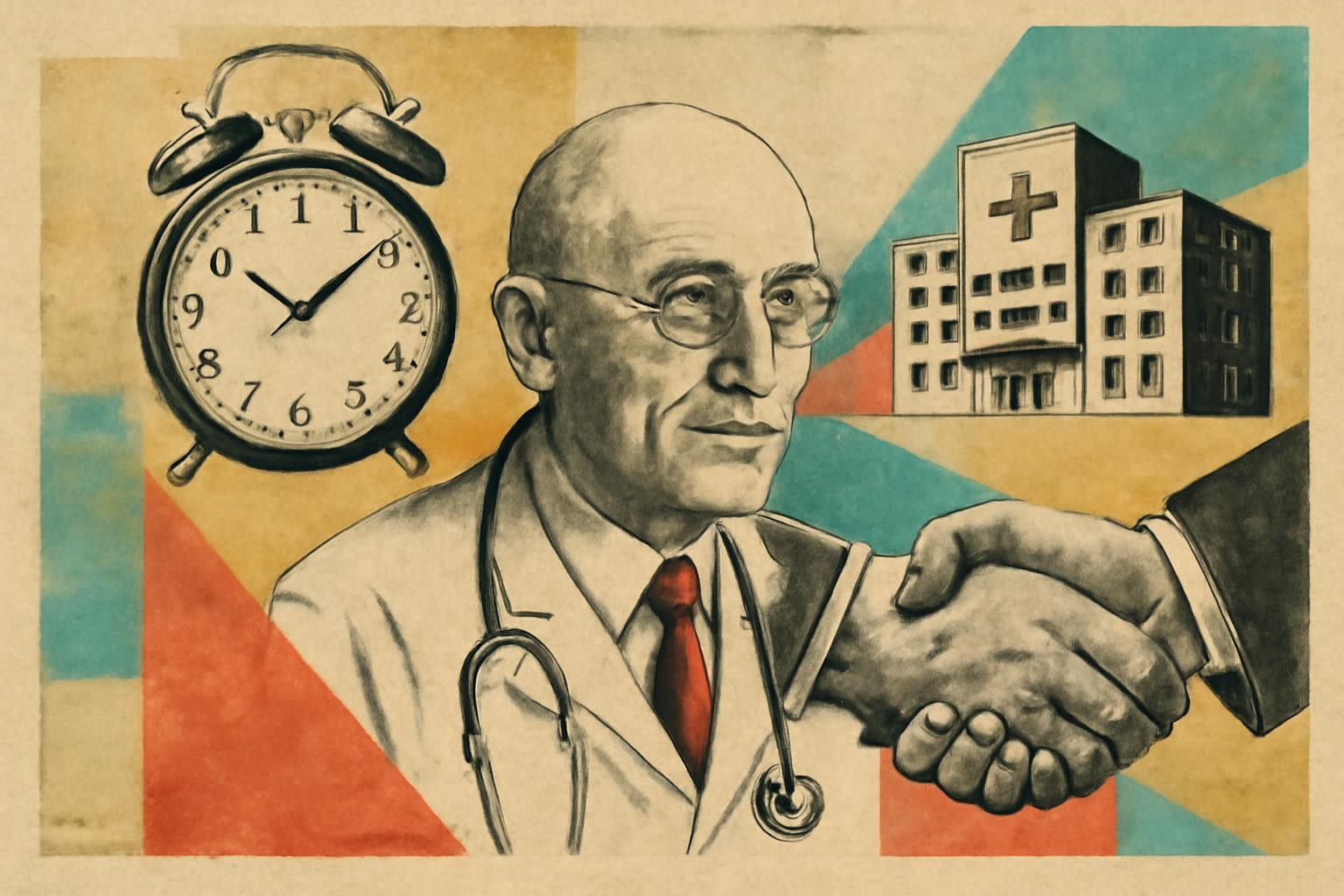A retired GP stepping back into hospital life on a part‑time basis, filling a routine care niche and proving the value of time as capital, shows what the market in freedom can accomplish when the state stays out of the way. A neighbor’s nudge and a trial period turning into a steady role illustrate how skilled individuals can reallocate their labor to meet real needs without top-down mandates. Patients and junior staff prize the continuity, the reassurance, the extra attention that a seasoned practitioner can offer, and the arrangement rests on voluntary association, not coercive planning. The wider point is that a looming shortage becomes manageable not through more bureaucratic porridge, but by unlocking existing talent and letting people contract for care in ways that respect both patient autonomy and physician choice. The numbers about looming shortages aren’t an argument for a bigger state role; they’re a reminder that central control distorts incentives and misallocates talent, whereas decentralized, voluntary solutions tap into real knowledge and local conditions—the Hayekian insight that knowledge is dispersed and best coordinated by individuals and markets, not by planners.
From a Hayekian lens, the miracle isn’t that a hospital device or policy saved tomorrow’s care; it’s that a nearby, informal arrangement unlocked a scarce resource: time. The local, mutually beneficial action—an elderly professional offering measured, trustworthy care—embodies spontaneous order: individuals pursuing their own ends, within a framework of property rights and voluntary exchange, producing social value without coercion. What threatens this is not the improvisation itself but the very structure that makes improvisation hard: licensing walls, rigid staffing rules, and funding models coercively directing who may do what, when, and for whom. If the market were freer, more people could answer the call to step in where there is demand, at prices and terms patients understand and consent to. The cure for shortages is not more compulsion to “save” care, but more freedom to contract, more price signals to allocate labor, and more patient choice to reward competence and reliability.
Nozick would frame this as a straightforward case of rights-respecting, voluntary arrangements. The retiree’s decision to work part-time reflects self-ownership in action: he chooses a role, the hospital accepts a voluntary arrangement, and patients consent to care under terms they understand. There is no coercion, no redistribution by decree—only a triad of consent, service, and reciprocity. If the state aims to “solve” shortages, it would violate rights by coercively channeling labor, subsidizing one form of care over another, or mandating staffing mixes. The proper role of government, in a Nozickian sense, is narrow: protect rights, enforce contracts, and stop confiscation. Any expansion that compels people to work, to serve, or to fund care through force would be illegitimate. Therefore, a genuine solution respects patient autonomy, expands freedom to contract for services, and tolerates a mosaic of providers—hospitals, private clinics, volunteers—so long as all parties voluntarily participate.
Rand would push this further into the realm of individual responsibility and rational self-interest. The story is a case study in the virtue of productive work: a physician who finds renewed purpose and contributes his time because it serves his own goals as well as the needs of others. It is precisely through voluntary, self-interested action that value is created, not through redistribution or command. The moral here is not “care is owed to all” but “care is earned by competence, reliability, and choice.” The emphasis on time as the most precious asset—and on the human touch that money cannot manufacture—underscores Rand’s insistence that a free society rewards merit and contracts on the basis of voluntary consent. The critique of any policy that depends on coercion—whether it’s mandating staffing, steering resources, or socializing medical responsibility—follows naturally: such policies undermine the very rational self-interest that produces better care and more innovative arrangements.
The practical libertarian takeaway is brutal in its clarity: resist expanding the state’s tent over healthcare labor. Resist licensing and top-down dictates that stifle flexible career paths and reduce the ability of individuals to respond to human need through voluntary agreement. Promote legal and regulatory environments that allow retired professionals or part‑timers to re-enter care on terms they freely negotiate with patients and hospitals. Encourage competition among providers, with transparent pricing and patient-driven choice, so talent is rewarded for reliability and quality rather than for compliance with centralized planning. Where care can be supplied through cooperative, voluntary means, do not substitute coercive funding or mandates; let the market, guided by individual rights and the rule of law, determine who provides what care, at what price, and under what terms.
In short, this micro-story of a seasoned doctor rejoining care at a local hospital is a libertarian parable: human capital, time, and personal responsibility can alleviate shortages more effectively than state-engineered Band-Aids. When the state steps back and permits voluntary, patient-centered contracting, Hayek’s dispersed knowledge finds a way to align with Nozick’s rights—and Rand’s endorsement of rational self-interest—to deliver care that is both more humane and more efficient.
